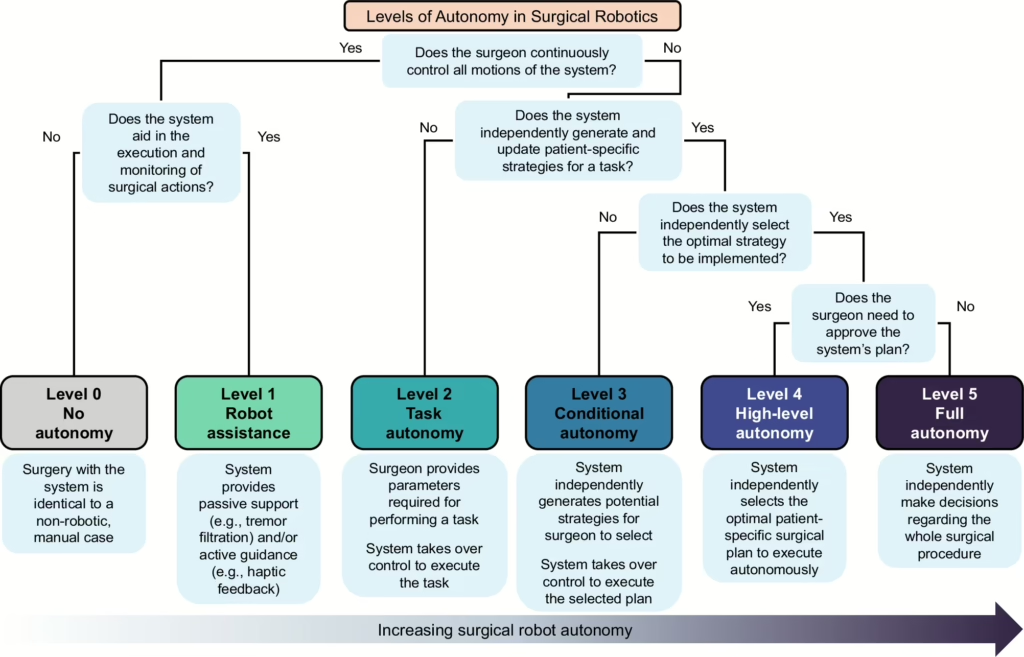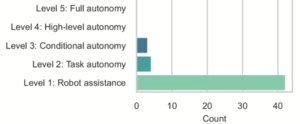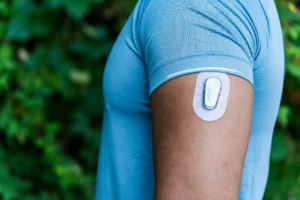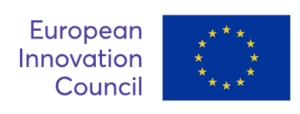Insights
MEDICA 2025: Top Three Takeaways
Prodigy had the pleasure of attending MEDICA in Düsseldorf, Germany this past week, where we gained valuable insight into key takeaways shaping MedTech heading into 2025.
While we may not have mastered German during the trip, the event provided a much sharper understanding of where innovation, product development, and clinical technology are heading. Across the world’s leading medical trade fair, three takeaways in particular rose above the noise.

Practical Implementation of AI in MedTech
One of the most talked-about MEDICA 2025 takeaways centered on how AI is actually being used in clinical practice today. Not in theory, but in reality.
One of the most grounded perspectives came from Dr. Thomas Heilinger of ARON Surgical, an AI-based surgical decision support tool and platform. He referenced a recent study published in NPJ Digital Medicine that proposes a six-level framework for surgical autonomy, ranging from Level 0 (no autonomy) to Level 5 (full autonomy).


According to the study, 86% of robotic systems in use today sit at Level 1: Robot Assistance. That means the overwhelming majority of “AI-enabled” surgical robotics are providing support, not making independent decisions. Features like tremor filtration, haptic feedback, and guidance are meaningful improvements, but they are far from machines executing tasks autonomously.
This reality underscores a main theme of MEDICA: AI in MedTech is firmly in the augmentation phase, not the automation phase. Despite the ongoing hype, MEDICA made one thing very clear: the future of clinical autonomy is coming, but we’re still early.
The Changing Landscape of Wearables Development

When we talk about “wearables,” we’re really talking about three major categories shaping continuous monitoring today: smartwatches, hearables, and smart patches. And each is evolving at a very different pace.
Smartwatches remain the category everyone knows, with roughly 200 million units shipped last year and a steady 7% CAGR. Yet the runway is still long. Out of the 1.2 billion watches sold annually, only about half are electronic, meaning smartwatches have plenty of room left to grow.
Hearables, meanwhile, are the quiet giants at 350 million units shipped last year. The ear is increasingly valuable real estate for health sensing, and the adoption curve reflects that.
But the fastest-growing area by far is smart patches, now at 300–350 million units per year. Their appeal is straightforward, offering continuous medical-grade data without added friction to daily life.

One industry speaker from Solventum (formerly 3M Healthcare) emphasized an important shift: as hardware becomes smaller, smarter, and more capable, it’s now outpacing the mechanical realities of wearability. The limiting factor is no longer the sensor; it’s how the device interacts with the body.
A study on “skirt size” (the adhesive margin around the hardware) underscored this: simply adding more adhesive doesn’t guarantee better performance. Each device requires thoughtful testing to strike a balance between comfort, durability, and real-world reliability. It’s a reminder that as innovation accelerates, user experience and wearability have to evolve just as quickly.
As MedTech moves toward continuous monitoring, companies that solve for comfort, reliability, and seamless integration into daily life will have the edge.
European Investment in MedTech Attempts to Close the Gap with U.S. Innovation

Another of the MEDICA 2025 takeaways involved Europe’s push to close the innovation gap with the U.S. through major increases in MedTech funding. Europe is making a very deliberate push to strengthen its innovation ecosystem, and the European Innovation Council (EIC) is at the heart of that effort.
The EIC openly acknowledges that the U.S. currently holds a lead in MedTech innovation, particularly as companies move into later-stage funding and commercialization. Early research and scientific discovery are strong in Europe, but once startups require significant capital and infrastructure to scale, the gap widens.
To address that, the EIC is deploying substantial funding. As highlighted during one of the sessions at MEDICA, the EIC’s 2026 budget exceeds €1.4 billion, spread across programs designed to support innovators from concept to scale:
- Pathfinder for breakthrough research
- Transition to move technology toward clinical and commercial readiness
- Accelerator for high-growth startups with global potential
- Scale-up and innovation challenges for targeted areas of impact
Across conversations, panels, and booth demos, people weren’t just talking about innovation; they were talking about implementation, integration, and impact.
And perhaps that’s MEDICA’s real value. It brings together thousands of people from around the world who may disagree on strategy, regulation, or the best adhesive for a smart patch, but are aligned on the bigger picture. Patients sit at the center of every conversation worth having.
Want to explore how these trends can accelerate your product development? Let’s connect. Contact Prodigy today.
References
Lee, A., Baker, T.S., Bederson, J.B. et al. Levels of autonomy in FDA-cleared surgical robots: a systematic review. npj Digit. Med. 7, 103 (2024). https://doi.org/10.1038/s41746-024-01102-y
Solventum. (n.d.). Image: Wearable sensor, Medical Specialties, Exploded, Components, Materials, Adhesives, Electronics, Flexible Circuits, Health Care, Patient Monitoring [Image]. In Medical wearables. Retrieved November 21, 2025, from https://www.solventum.com/en-us/home/medical/medical-technologies-oem/medical-wearables/
Molex. (n.d.). Smart skin patch device, Smart Skin Patches and Noninvasive Medical Sensing [Image]. In Smart Skin Patches and Noninvasive Medical Sensing. Retrieved November 21, 2025, from https://www.molex.com/en-us/blog/smart-skin-patches-noninvasive-medical-sensing/




